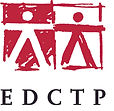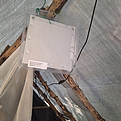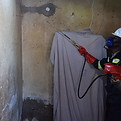

LASER Consortium
LASER Consortium

Project Background
Spatial emanators represent a promising new tool in malaria prevention. Following successful trials in western Kenya that demonstrated a significant reduction in malaria infections following the introduction of the short acting spatial emanators (Mosquito Shield™), the WHO issued a conditional recommendation for spatial emanators in August 2025. The long-acting Guardian™ product, which protects for up to 12 months, offers a simplified deployment approach compared to short-acting alternatives.
To guide policy decisions on optimal vector control strategies, evidence is urgently needed to fill specific knowledge gaps, in order to achieve the greatest reduction in malaria burden with available resources. Key evidence needs include: (i) a better understanding of the efficacy of LASER on epidemiological and entomological endpoints, (ii) the mechanisms of action of SRs and how these are affected by insecticide resistance, (iii) optimal tools to evaluate volatile insecticides and LASERs, and (iv) further evidence on cost, cost-effectiveness, and willingness-to-pay for LASERs.
Our goal is to assess both the epidemiological impact of the novel LASER technology and, through an inter-disciplinary approach, address the key issues that will impact the uptake and long-term sustainability of this novel control method.



Study Overiew
Primary Research Questions
-
Are long-acting spatial emanators/repellents (LASER) more effective than standard care for malaria control in western Kenya?
-
How does protection compare to Indoor Residual Spraying (IRS) with pirimiphos-methyl?
Design
-
Cluster-randomized trial involving 69 villages in Western Kenya, with 23 villages assigned to each of three study arms.
-
5 cross sectional surveys:
-
Baseline (prior to intervention deployment)
-
Year 1: 6 and 12 months post intervention deployment
-
Year 2: 6 and 12 months post intervention deployment
-
Duration
2-year study period with interventions delivered annually in January 2026 and January 2027
Intervention Arms

Standard of care (SoC)
LLINs + vaccines + IPTp
Ministry of Health long-lasting insecticidal nets (LLINs), vaccines, and intermittent preventive treatment in pregnancy (IPTp)

LASER + SoC
SC Johnson Guardian™ spatial emanators (3-4 devices per structure) plus standard of care

IRS + SoC
Indoor residual spraying with Actellic 300CS (pirimiphos-methyl) plus standard of care



Study Objectives
Primary Objective
Evaluate the impact of LASER and IRS compared to standard care on malaria parasite prevalence in children aged 1-15 years (PfPR₁₋₁₅) measured by microscopy in western Kenya
Secondary Objectives
Epidemiology:
-
Compare LASER and IRS vs standard care on malaria incidence
-
Assess whether LASER is non-inferior to IRS (7% point margin)
Entomology:
-
Measure impact on vector density, sporozoite rate and insecticide resistance
-
Characterize mosquito behavior and LASER's mode of action
-
Inform optimal deployment strategies
Qualitative & Economic:
-
Examine community perceptions and delivery barriers
-
Estimate willingness-to-pay and cost-effectiveness




Why This
Study
Matters
The 12-month lifespan of Guardian™ positions LASER as a "long-acting, always-on" tool comparable to IRS but potentially more cost-effective and logistically simpler. With IRS facing implementation challenges due to cost and complexity, and uncertain future funding, this trial will provide critical comparative evidence to help national malaria control programs, policymakers, and funders determine the most cost-effective approach to malaria reduction in high-transmission settings.
Consortium overview
Who we are
The LASER consortium unites leading experts in malaria control from Liverpool School of Tropical Medicine (LSTM), Kenya Medical Research Institute (KEMRI), Radboud University, Institute of Tropical Medicine (ITM), and Centers for Disease Control (CDC). Our multidisciplinary team combines deep expertise in epidemiology, entomology, vector biology, anthropology, economics, and public health implementation.
Our Approach
Built on long-standing institutional partnerships, we integrate rigorous scientific research with real-world implementation insights. Our established connections with national and global policymakers ensure that research findings translate into effective malaria control programs and policies.
Our Expertise
We specialize in designing and executing large-scale vector control trials, with proven experience in evaluating novel vector control tools, insecticide resistance monitoring, cost-effectiveness analysis and medical anthropology. Members of the consortium have successfully delivered major trials including LLINEUP (Uganda), ATSB (Kenya), and the Busia SR trial (Kenya).
Our Commitment
We're dedicated to advancing vector control technology from research to market access, working closely with communities, stakeholders, and product developers to deliver evidence-based solutions for malaria prevention.